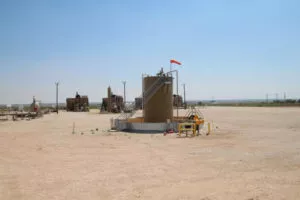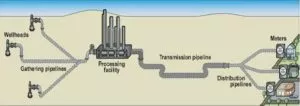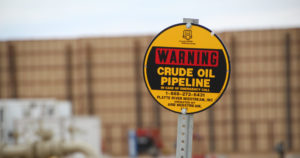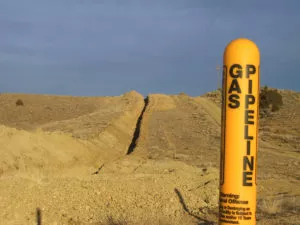There are four main types of pipelines:
See alternatives to pipelines.
A few pipeline facts:
- They are usually made of steel or plastic
- They range from just a few inches to over 40 inches in diameter
- There are about 2.7 million miles of oil, gas, and other hazardous liquids pipelines across the United States
- Half of oil and gas pipelines were built in the 1950s-1970s, which means that many are nearing the end of their ~50-year design life
- Most are buried underground and many cross under rivers
Pipeline regulation is based on a complicated mix of federal and state oversight that depends on what different pipelines do, what they carry, and where they go.
No matter the type, all pipelines pose the same risks:

Safety
Oil and gas pipelines are prone to explosions and fires. From 1986-2013 there were nearly 8,000 “significant” pipeline spill, fire, and explosion incidents, resulting in more than 500 deaths, 2,300 injuries, and nearly $7 billion in damage. While aging lines tend to leak, break, and corrode, even the newest gas and liquids pipelines are failing at a similar rate.
Safety risks are worse if pipelines aren’t frequently monitored and inspected. There are only about 530 state and federal pipeline inspectors nationwide. In addition, only about 50% of oil and liquids pipelines and 10% of gas pipelines are subject to federal management guidelines for inspections and repairs. As a result, many pipeline operating companies set and follow their own variable standards. Some improvements in federal safety regulations were proposed in 2016 for gas transmission and gathering pipelines and adopted in 2017 for oil and liquids pipelines.
Environmental damage
Pipelines can pollute air, water, soil and climate when they leak. Pipelines that cross rivers and streams are more vulnerable to breaks when heavy rain and floods occur. High-profile recent pipeline spills that damaged river ecosystems and drinking water include those in the Yellowstone River, the Susquehanna River, and the Kalamazoo River.
Most pipelines are buried, but a wide buffer of land is required for pipeline maintenance that disturbs the soil and destroys trees, vegetation, and wildlife habitat. In the Marcellus Shale region, between 60,000-150,000 acres of forest could be cleared for pipeline development by 2030.
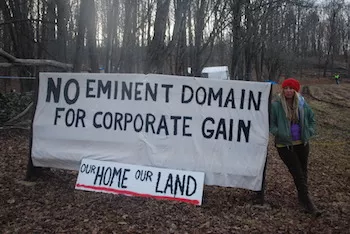
Property rights
Pipeline companies have to secure Rights of Way (ROW) if the route they want to use crosses private or public land. Companies often try to do so through eminent domain, which can allow them to seize private land against the landowner’s will, if they can describe the pipeline as providing a public benefit.
Private property rights have become a very controversial issue in the development of new pipelines. Legal battles have erupted in Pennsylvania, Iowa, Texas, West Virginia, and other states over whether pipelines are in the public interest and as justification for corporate seizure of private property via eminent domain.
As the number of pipeline projects increases, landowners seek more information on their legal rights to refuse to lease their land to companies, and just compensation if they choose to do so. Recently, Native American nations have asserted tribal land rights to oppose the Dakota Access Pipeline in North Dakota, the Trans-Pecos pipeline in Texas, and the Line 5 pipeline in Wisconsin.
For More Information
- Pipeline Safety Trust (PST) research and data on pipeline development, safety, regulation, and policy, including briefing papers and a landowner guide.
- Pipeline Safety Coalition research and resources for the public on pipeline safety and environmental issues, including land use and landowner rights.
- Stop the Pipelines a website sponsored by Delaware Riverkeeper Network with information about pipeline impacts and local and state campaigns.
- U.S. Federal Energy Regulatory Commission (FERC) issue and project overviews and federal regulations and policies related primarily to interstate natural gas and oil pipelines.
- U.S. Pipeline and Hazardous Materials Safety Administration (PHMSA) issue overviews and data on the nation’s pipeline systems and federal laws and regulations. PHMSA also has a national pipeline mapping system
- National Conference of State Legislatures (NCSL) This page describes the role of states in pipeline regulation and provides a list of the agencies in each state responsible for pipeline oversight.
- U.S. Congressional Research Service report Pipeline Transportation of Natural Gas and Crude Oil: Federal and State Regulatory Authority


